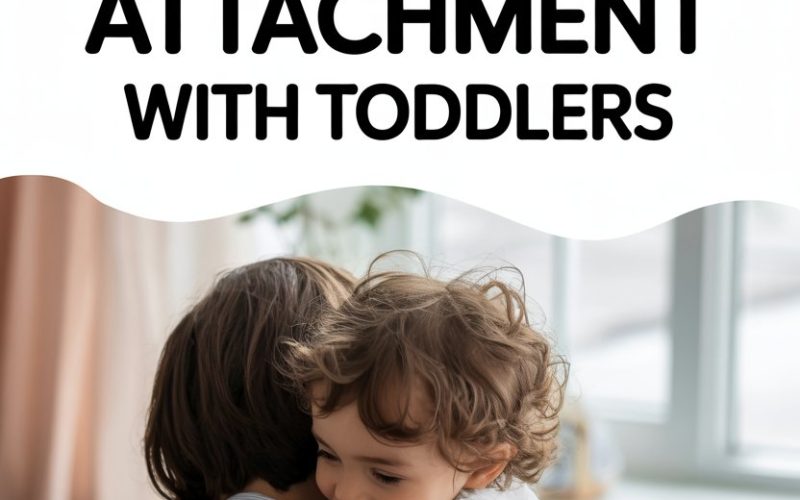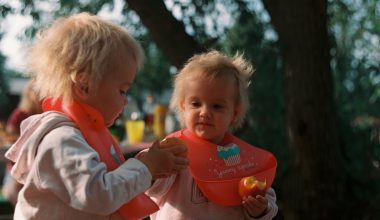Ever tried to hold a conversation with a toddler while microwaving dinner, replying to work emails, and cleaning yogurt off a Labrador’s tail?
Parenting in the trenches doesn’t lend itself to “perfect moments” for bonding, but the good news—attachment doesn’t require a spa weekend or a PhD in child psychology.
Those sticky, giggly, chaotic minutes you share each day are more than enough to build a solid foundation for your little one’s emotional security.
Ready to build stronger connections, even on your busiest days? Let’s get straight to it.
1. Tune In to Your Toddler’s Cues
Toddlers might not send calendar invites, but they’re constantly broadcasting requests for attention—whether it’s a shout, a tug on your sleeve, or a dramatic collapse onto the kitchen floor.
Attachment deepens when you notice and respond to these signals, even the wobbly, pre-verbal ones.
Psychologist Mary Ainsworth’s classic research on attachment showed that children develop trust when caregivers consistently respond to their needs.
No one responds perfectly (unless you’re secretly a robot), but the magic comes from being emotionally available most of the time.
Spot your little one gazing up at you during play? Offer a smile or a silly face.
Hear a grunt or see some urgent pointing? Pause and check in, even if it’s just a “Show me!” while you wrestle a baby sock onto a squirmy foot. You’re showing them their feelings matter—and that’s attachment gold.
2. Create Rituals That Are Just Yours
Think of rituals as the secret handshake between you and your toddler, except instead of a handshake, it might be a bedtime chant, a Saturday pancake face, or a kitchen dance to Baby Shark (on repeat, apparently forever).
Rituals don’t have to be Pinterest-worthy. What matters is the reliability and the togetherness.
According to a study in the journal Family Process, simple family rituals can reduce stress and boost child well-being.
Maybe it’s two stories every night, a quick “I love you more” battle before you dash off to work, or a shared look as you pass the swings at the park. Consistency, not extravagance, wins the day.
Even on days when schedules unravel, a tiny ritual you can squeeze in (a special snack, a song, a silly phrase) can be a touchstone your toddler counts on.
3. Embrace Touch (Even When It’s Messy)
Hugging, cuddling, tickling, carrying—physical touch is the toddler version of saying, “You’re safe here with me.” Research has shown that physical affection during early childhood is linked to healthier stress responses and stronger emotional bonds.
If your toddler is a limpet, congratulations, you’re halfway there. For the wrigglers or those who need more personal space, gentle back rubs, playful foot kisses, or holding hands on a walk work wonders.
And yes, toddlers have an uncanny knack for sticky hands, snotty noses, and the mysterious ability to make jam appear on your trousers.
Embrace the mess. Every cuddle is a deposit in the attachment bank—even if you’re covered in peanut butter by bedtime.
4. Make Eye Contact (Even For Three Seconds)
Ever tried having a heartfelt chat with someone while they scroll through their phone? Toddlers notice, too.
Eye contact is a powerful way to say, “I see you. You matter.” A study published in Infant Behavior and Development found that even brief moments of eye contact support emotional connection and language development in toddlers.
You don’t need to stare them down (unless you’re both up for a silly staring contest), but those quick connections—during nappy changes, snack time, or while wrangling a toothbrush—send a strong message. Even three seconds counts.
Toddlers thrive on those micro-moments when you’re fully, if briefly, present.
5. Narrate the Day Together
Ever notice how toddlers love a running commentary? “Now you’re putting on your shoes! There goes your hat—flying across the room again! You’re the fastest banana eater I’ve ever seen.”
This isn’t just filling the air with words; it’s emotional scaffolding.
Narrating daily routines lets your child know you’re tuned in and helps them make sense of their big, bustling world.
According to speech-language experts at The Hanen Centre, talking through daily events boosts not just language skills, but emotional understanding and connection.
No need to launch into a David Attenborough impression (unless you want to). Just keep it natural.
Describe what you’re doing, notice what your child is interested in, and respond with enthusiasm—even (especially) when they ask “why” for the seventy-fourth time before 9am.
6. Play Like No One Is Watching
Toddlers are the reigning champions of “let’s pretend,” and joining their play, even briefly, is like sending them a handwritten note: I love spending time with you.
Child psychologist Dr. Lawrence Cohen, author of Playful Parenting, argues that getting down on the floor for silly games, rough-and-tumble fun, or imaginary stories is a shortcut to deeper attachment.
Play is how toddlers process their feelings and make sense of family life.
No need for elaborate crafts or curated activities—just follow your child’s lead. Let them be the boss of the game (for once, anyway).
Whether it’s stacking blocks, roaring like dinosaurs, or pretending to be grumpy kangaroos, your willingness to enter their world matters more than any toy.
7. Repair and Reconnect After Tough Moments
Melt-downs, tears, and occasional heroic-level tantrums are par for the toddler course. Yelling, snapping, or losing patience doesn’t mean you’ve failed at parenting (see also: parents are people, not saints).
What matters for attachment is repair—how you reconnect after things go sideways. A study out of the University of Oregon shows that children feel safest when adults admit mistakes and make amends.
Offer a cuddle, a simple “I’m sorry I shouted, that was hard for both of us,” or even a shared snack on the kitchen floor post-tantrum.
These moments of repair teach toddlers that relationships can weather bumps, and that love is sturdy enough to survive even the most epic meltdown.
The Messy Magic of Attachment
Attachment isn’t built in grand gestures; it’s stitched together from everyday moments—the extra story, the shared giggle, the “just checking” glance across the room.
Even on days when you’re running on toast crusts and coffee, these small habits assure your child: you’re my safe place.
Connection with your toddler is a living thing, reshaped by each new day’s chaos and charm. It thrives on imperfect effort, a willingness to try again, and a sense of humor about sticky hands and noisy mornings.
Turns out, you don’t need more time. Just a few mindful minutes, and you’re well on your way.





